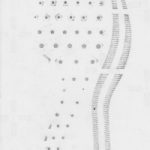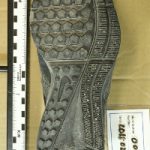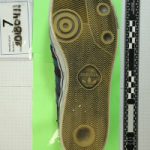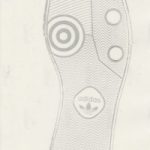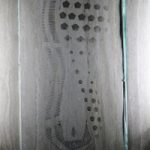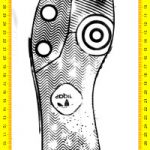Longitudinal Shoe Outsole Impression Study
Carriquiry, 2018
About the Study
In order to ground forensic science in data-driven methodology, it is necessary to assemble reference databases that can be used to benchmark new methods. The longitudinal shoe outsole database hosted on the Center for Statistical Applications in Forensic Evidence (CSAFE) data portal contains images of 160 pairs of athletic shoes, in two styles and four sizes. Participants wore the shoes for at least 10,000 steps per week, and images of the shoes were taken at five-week intervals, producing five observation points for each pair of shoes. At each time point, shoes were imaged using pressuremat scans, high-resolution photography, 2D digital scanning, 3D scanning, film/dust prints, paper/dust prints, and vinyl/dust prints intended to simulate crime scene prints. For a subset of the shoes, randomly acquired characteristics have been marked and identified by the Israeli Police.
This database, which is freely available to the public, provides a curated data set for examination of Randomly Acquired Characteristic (RAC) development, individual wear pattern characterization, and benchmarking of statistical methods for matching outsole prints. As there are many replicates of each size/style combination in the data set, it is possible to assess within-style individual characteristics and examine how those characteristics develop over time. In addition, as shoes have been imaged using multiple methods, with replicates of each method at each timepoint, it is possible to examine the variability of each collection method and establish the strengths and weaknesses of each method. The database is structured to allow for the download of query-filtered subsets of the images and accompanying metadata. Users can also preview images and 3D surface files using the graphical database interface. Bulk downloads of the full dataset, which is approximately 1.4 TB, will also be available.
Study Description
A longitudinal study of 160 shoes. Shoes were Nike Winflo 4 or Adidas Seeley, and were worn for approximately 6 months, with data collected initially and during 4 check-in periods.
Collection Method Documentation
Initial Longitudinal Study
The baseline collection procedures were used in the collection of initial data about the unworn shoes and the study participants as well as during the study. The baseline procedure documents the collection procedures; a separate document describes changes made to these procedures during the study to improve image quality and reduce equipment malfunctions.
In addition, single-procedure files are provided for each collection method:
- Tekscan Mat Scanner
- 2d Digital Scanner (EverOS Everspry)
- Digital Camera
- Film/Powder Prints
- Paper Print/Vinyl Prints
- 3d Digital Scanner (Stationary)
- for the EinScan Pro+ 3D Scanner with a turntable
At the conclusion of the longitudinal study, we decided to create prints similar to those which may be found at a crime scene with some of the worn shoes.

